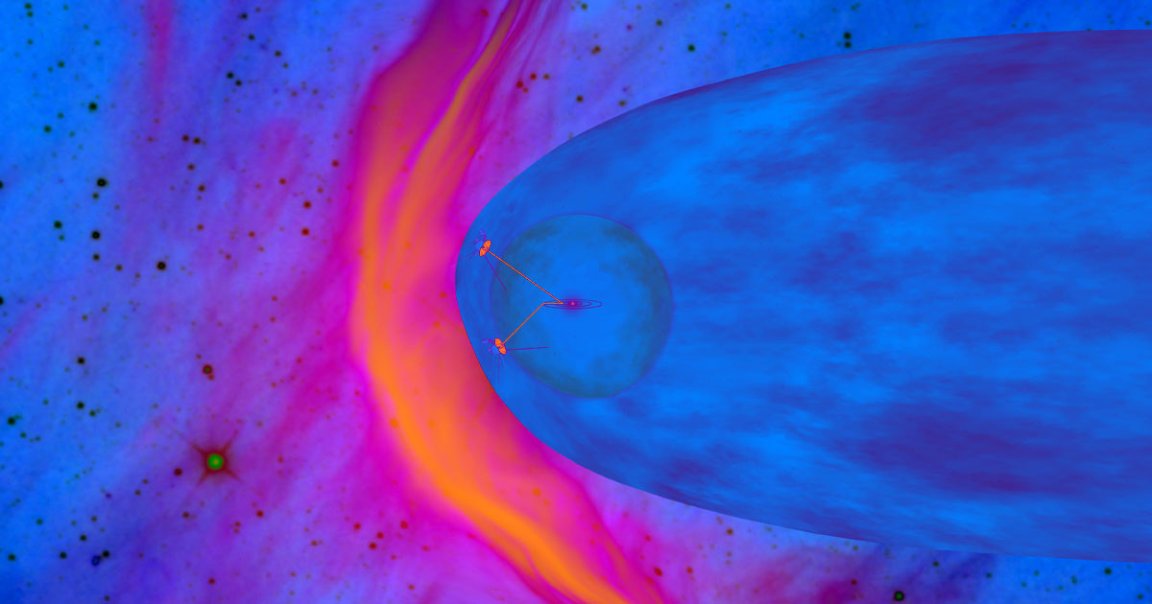
Literal Firewall
At the outermost edges of our solar system lies a barrier of super-hot plasma — a giant wall of fire from the Sun that defines the edge of interstellar space.
As Voyager 2 began its journey into interstellar space in late 2018, it recorded temperatures as high as 49,427 degrees Celsius (89,000 degrees Fahrenheit), according to Nerdist. And while the space probe seems to be fine, the plasma shield could pose a problem to NASA as it moves towards its planned interstellar mission.
Defining Boundaries
Scientists are just now measuring the plasma layer, which was created and is maintained by solar winds that blow outward from the Sun to form a giant bubble, according to research published this month in Nature Astronomy.
According to a release from NASA’s Jet Propulsion Laboratory, the new research suggests that Voyager 2 may not actually be in interstellar space yet, but rather stuck in a wide transitional region made of incredibly hot, compact plasma just beyond the outer reaches of the solar system.
READ MORE: 89,000°F Wall of Plasma Surrounds Our Solar System [Nerdist]
More on interstellar space: Interstellar Object’s Home Solar System May Resemble Our Own